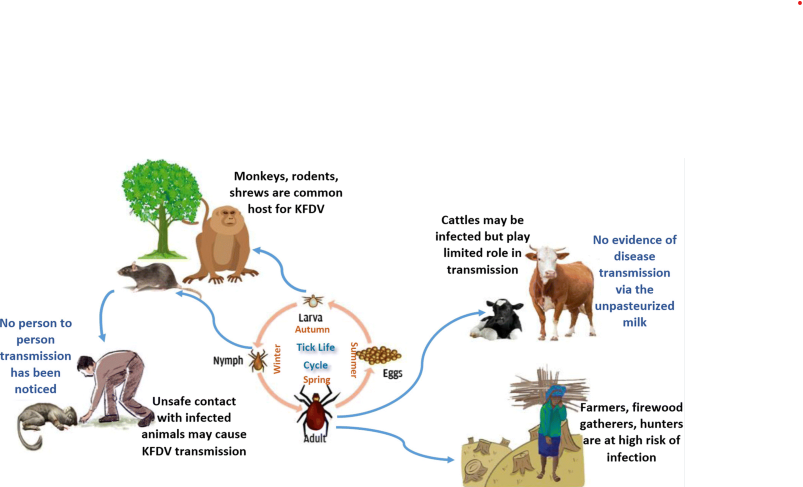Context:
Karnataka ‘s Department of Health & Family Welfare recently conducted around 2500 tests to check the prevalence of Kyasanur Forest Disease.
About Kyasanur Forest Disease (KFD):
- It is a tick-born viral hemorrhagic fever, which is also known as Money fever.
- Origin: It was first identified around 1956 in the Kyasanur Forest area of Shivamogga district, Karnataka.
- Host: Rats, squirrels, Mice, and Shrews are major hosts.
- Symptoms: High fever, severe muscle pain, bleeding problems, and low blood pressure.
Transmission:
- It primarily occurs via the forest tick Haemaphysalis spinigera.
- It also transmits after a tick bite or contact with an infected animal (a sick or recently dead monkey).
- No person-to-person transmission has been described.
- Complications: Severe cases can lead to organ failure, neurological complications, and even death.
Geographical Distribution:
- Endemic Regions: It is predominantly found in forested areas of southern India, including Karnataka, Kerala, Tamil Nadu, and Maharashtra.
- Seasonality: Cases typically peak during the dry season, from November to June, coinciding with increased human-tick interactions.
Measures:
- Karnataka’s forest department is offering free ‘DEPA Oil’ (a tick repellent) to families who enter the forest areas.
- Vaccination: A live attenuated vaccine is available for individuals residing in endemic areas, protecting against the disease.
Challenges:
- Remote Areas: Limited healthcare infrastructure and accessibility in remote forested regions pose challenges for timely diagnosis and treatment.
- Ecosystem Changes: Deforestation, urbanization, and climate change may influence the distribution and prevalence of KFD.
Conclusion:
- KFD remains a significant public health concern in endemic regions of India, requiring coordinated efforts in surveillance, prevention, and control.
- Public Awareness: Education and awareness campaigns to inform communities about preventive measures and early recognition of symptoms.

